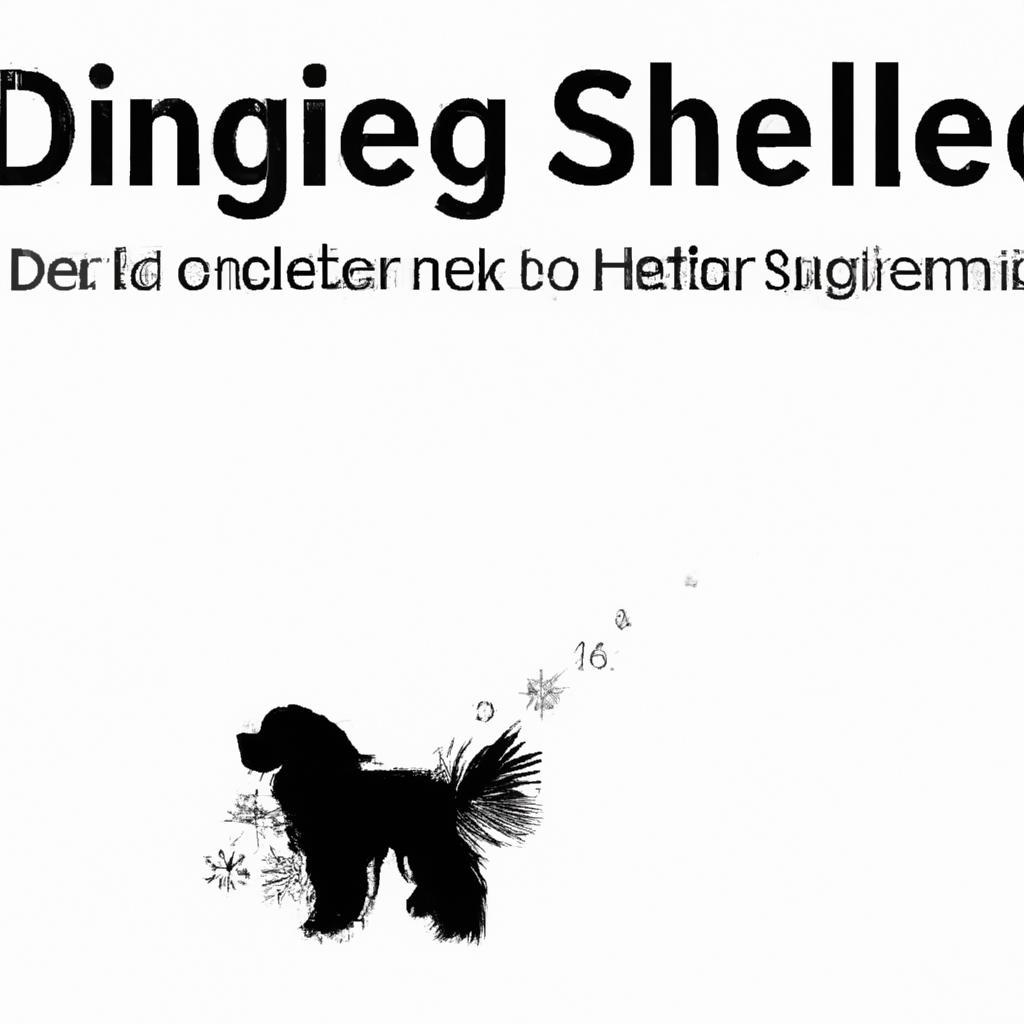In a quaint little town, a family was on the hunt for the perfect pet. They loved dogs but dreaded the thought of unpleasant odors. One day, they met a charming Basenji, known as the ”barkless dog.” This breed not only captivated them with its playful spirit but also boasted a unique trait: minimal odor! With its short coat and natural grooming habits, the Basenji became the family’s beloved companion, proving that a dog can be both delightful and low-maintenance. Choose wisely—consider the Basenji for a fresh, joyful home!
Contents
- Understanding Dog Odor: Factors That Influence Smell
- Top Breeds Known for Minimal Odor Production
- Grooming Practices to Maintain a Fresh-Smelling Dog
- Choosing the Right Environment for a Low-Odor Experience
- Q&A
Understanding Dog Odor: Factors That Influence Smell
When considering the factors that influence a dog’s odor, it’s essential to recognize that each breed has unique characteristics that can affect their scent. **Genetics** plays a significant role; some breeds naturally produce more oils in their skin or have specific coat types that can trap odors. For instance, dogs with dense, double coats may retain more smells compared to those with short, sleek fur. Understanding these genetic predispositions can help potential dog owners make informed decisions about which breeds might be less odorous.
Another critical factor is **hygiene**. Regular grooming, including baths and brushing, can significantly reduce a dog’s smell. Dogs that are bathed consistently tend to have less buildup of dirt, oils, and bacteria, which are primary contributors to unpleasant odors. Additionally, maintaining dental hygiene is crucial, as bad breath can often be mistaken for body odor. Investing time in grooming routines can lead to a fresher-smelling companion.
The dog’s **diet** also plays a pivotal role in their overall scent. High-quality, nutritious food can lead to healthier skin and coat, which in turn can minimize odor. Conversely, low-quality dog food may lead to skin issues or digestive problems, resulting in a more pungent smell. Owners should consider the ingredients in their dog’s food and opt for options that promote a healthy coat and skin, ultimately reducing any unpleasant odors.
Lastly, **environmental factors** cannot be overlooked. Dogs that spend a lot of time outdoors or in damp conditions may develop a stronger odor due to exposure to various elements. Regularly cleaning their living space and providing a dry, clean environment can help mitigate these smells. Additionally, ensuring that your dog has a comfortable and clean resting area can contribute to a fresher overall scent, making your furry friend more pleasant to be around.
Top Breeds Known for Minimal Odor Production
When it comes to choosing a dog that won’t overwhelm your home with odors, certain breeds stand out for their minimal scent production. These breeds often have unique coat types and grooming needs that contribute to their low-odor status. By selecting one of these breeds, you can enjoy the companionship of a dog without the worry of strong smells lingering in your living space.
**Basenji**: Known as the ”barkless dog,” the Basenji is not only quiet but also has a reputation for being exceptionally clean. This breed engages in self-grooming similar to cats, which helps to keep their coat free of dirt and odors. Their short, fine hair requires minimal maintenance, making them an ideal choice for those who prefer a low-maintenance pet.
**Shiba Inu**: With their fox-like appearance and spirited personality, Shiba Inus are another breed that tends to produce less odor. Their double coat sheds minimally, and they are known for their cleanliness. Regular grooming helps to keep their coat healthy and odor-free, allowing you to enjoy their playful nature without the worry of unpleasant smells.
**Poodle**: Available in standard, miniature, and toy sizes, Poodles are not only intelligent and trainable but also low in odor. Their curly, hypoallergenic coat traps dander and hair, preventing it from spreading throughout your home. Regular grooming is essential, but the effort pays off with a fresh-smelling companion that fits well in any household.
Grooming Practices to Maintain a Fresh-Smelling Dog
Maintaining a fresh scent for your dog goes beyond the occasional bath; it involves a comprehensive grooming routine that addresses various aspects of their hygiene. Regular brushing is essential, as it not only removes loose fur and dirt but also helps distribute natural oils throughout their coat. This process can significantly reduce odors and keep their fur looking shiny and healthy. Aim to brush your dog at least once a week, or more frequently for breeds with longer hair.
Bathing is another crucial element in keeping your dog smelling pleasant. However, it’s important to find the right balance; over-bathing can strip the coat of essential oils, leading to dryness and potential skin issues. Use a high-quality, dog-specific shampoo that is gentle on their skin and formulated to neutralize odors. Depending on your dog’s activity level and coat type, a bath every 4 to 6 weeks is generally recommended. Always ensure that you rinse thoroughly to avoid any residue that could contribute to unpleasant smells.
Don’t forget about the importance of dental hygiene in your dog’s overall scent. Bad breath can be a significant contributor to an unpleasant odor, so regular teeth brushing is vital. Incorporate dental chews or toys designed to promote oral health, as these can help reduce plaque buildup and freshen breath. Additionally, consider scheduling professional dental cleanings with your veterinarian to ensure your dog’s mouth stays fresh and healthy.
pay attention to your dog’s ears and paws, as these areas can harbor odors if not properly cared for. Regularly check and clean their ears to prevent wax buildup and infections, which can lead to unpleasant smells. For their paws, wipe them down after walks to remove dirt and debris, and keep their nails trimmed to avoid any potential odor from trapped dirt. By implementing these grooming practices, you can ensure your dog remains not only clean but also irresistibly fresh-smelling.
Choosing the Right Environment for a Low-Odor Experience
When considering a low-odor experience with your canine companion, the environment plays a crucial role. A well-ventilated space can significantly reduce the accumulation of pet odors. Ensure that your home has adequate airflow by opening windows or using air purifiers. This not only helps in minimizing smells but also contributes to a healthier living space for both you and your dog.
Another important factor is the choice of flooring and furnishings. Opt for materials that are easy to clean and less likely to absorb odors. **Hardwood floors, tile, and laminate** are excellent choices, as they can be wiped down easily. Additionally, consider using **washable rugs and furniture covers** to keep your living area fresh and inviting. Regular cleaning of these surfaces will further enhance your low-odor environment.
Designating specific areas for your dog can also help manage odors effectively. Create a comfortable space for your pet that includes their bed, toys, and food bowls. By keeping these items in one area, you can contain any potential smells. Make sure to choose a location that is easy to clean and away from high-traffic areas, ensuring that both you and your guests can enjoy a pleasant atmosphere.
Lastly, consider the impact of grooming on odor control. Regular grooming not only keeps your dog looking their best but also helps to minimize smells. **Brushing your dog frequently** removes loose fur and dander, while regular baths with appropriate shampoos can keep their coat clean and fresh. Establishing a grooming routine will not only enhance your dog’s hygiene but also contribute to a more enjoyable living environment.
Q&A
-
What breeds are considered the least smelly?
Some dog breeds are known for their minimal odor, including:
- Basenji
- Bichon Frise
- Poodle
- Shiba Inu
These breeds typically have hair instead of fur, which reduces dander and odor.
-
Why do some dogs smell more than others?
Dog odor can be influenced by various factors, including:
- Skin type and coat condition
- Diet and nutrition
- Hygiene and grooming practices
- Health issues, such as infections or allergies
Understanding these factors can help you choose a breed that aligns with your preferences.
-
How can I minimize my dog’s odor?
To keep your dog smelling fresh, consider the following tips:
- Regular grooming and bathing
- Maintaining a balanced diet
- Cleaning your dog’s living area frequently
- Regular vet check-ups to address any health issues
Implementing these practices can significantly reduce odor.
-
Are there any hypoallergenic dogs?
While no dog is completely hypoallergenic, certain breeds produce fewer allergens and are less likely to cause odor. Breeds like:
- Portuguese Water Dog
- Yorkshire Terrier
- Miniature Schnauzer
These dogs are often recommended for allergy sufferers and those seeking a less smelly companion.
choosing a dog with minimal odor can enhance your living environment and strengthen your bond with your furry friend. Consider breeds like the Basenji or Shiba Inu for a cleaner, fresher home. Embrace the joy of companionship without the unwanted smells!

大家好,我是彼得潘,專業的手法身體治療師。我喜歡探索和研究各種主題,並透過與人工智慧的合作分享專業、實用、有趣的文章。我們定期進行人工審核,以確保內容的準確性。如果您發現文章中有任何不準確的地方,請隨時與我們聯繫,我們會及時糾正。您可以透過 [email protected] 與我們聯繫。



